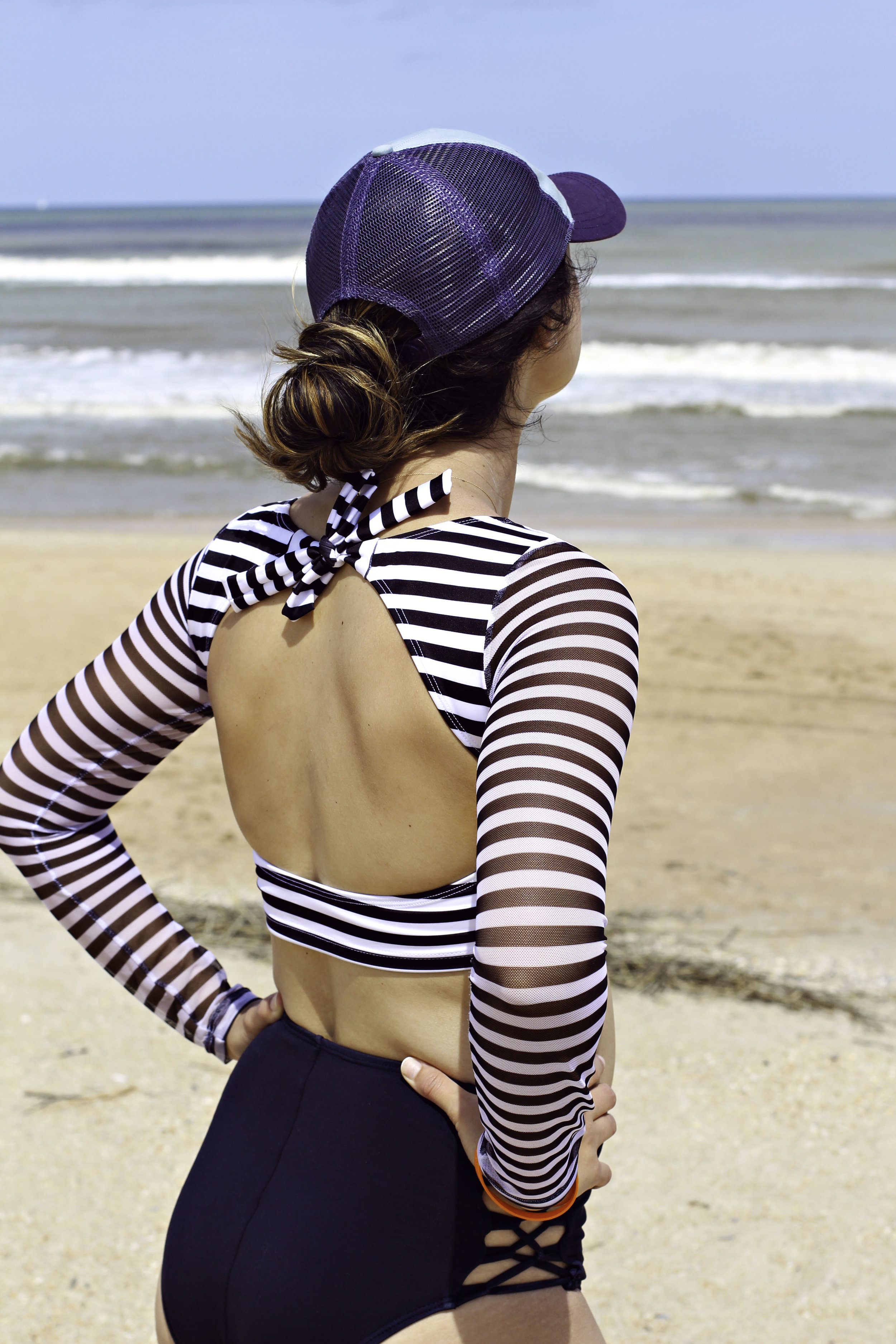Favorite NON-TOXIC Sunscreens.
/Although I should probably be wearing SPF every day of the year, it’s this particular time of year that I’m even more aware of the sunshine and its effect on my skin (and my boys’ skin!) So when it comes to choosing sunscreen, I take some time to consider the ingredients. Why? Because our skin is the largest organ in our body and anything we apply to our skin is immediately absorbed into our bloodstream. Conventional sunscreen is loaded with ingredients that are less than reputable. Did you know that the FDA is calling for sunscreen reform after discovering the way that traditional sunscreens penetrate the skin and potentially cause endocrine disruption and other harm? There are two surefire safe ingredients when it comes to sunscreen (titanium dioxide and zinc oxide), so those are the ones that I hone in on when I purchase!
If you’re confused about which ingredients to look out for, have no fear! I’m here to break down what I’ve learned (but please, know that this is just my research and my discovery - please do your own research, friends! I’m linking to everything in this post so please feel free to check all my sources!)
Okay, there are 2 types of sunscreen on the market- chemical and mineral. Because of the sneaky toxic ingredients that are in chemical sunscreen, I avoid those all together and look for mineral sunscreen.
Active Ingredients
First up, when checking out your sunscreen, make sure to look at the Active Ingredients. On the label, under “active ingredients”, look for:
ACTIVE INGREDIENTS TO LOOK FOR:
Titanium Dioxide
Zinc oxide
Conventional chemical sunscreens will use chemicals such as the following:
ACTIVE INGREDIENTS TO AVOID:
Oxybenzone: detected in nearly every American and found in mother’s milk; this chemical acts like estrogen in the body, alters sperm production in animals and is associated with endometriosis in women.
Octinoxate: also detected in mother’s milk, this chemical has hormone-like activity and is associated with reproductive system, thyroid and behavioral alterations in animals.
Homosalate: disrupts estrogen, androgen and progesterone.
Octocrylene: relatively high rates of skin allergy
Inactive Ingredients
After looking at the “active ingredients” I also look at the “inactive ingredients” to make sure they are free of harmful chemicals, too. This is where things can often get dicey. You don’t have to be an ingredient guru to make an informed decision here (seriously).
INACTIVE INGREDIENTS TO AVOID:
Fragrance/Perfume – because it can contain up to thousands of undisclosed chemicals linked to a slew of disease, cancer, endocrine disruption as well as developmental and reproductive toxicity.
Any ingredient ending in “paraben” like methylapraben, propylparaben, ethylparaben etc. Parabens act like preservatives in beauty products and mimic estrogen in the body. They are also linked to reproductive, immunological, neurological and skin irritation problems.
Ethoxylated ingredients which can be identified with “eth” in their name like laureth, steareth or ceteareth which are linked to carcinogens and breast cancer.
Phenoxyethanol – linked to skin and lung irritation. It's also toxic to the kidneys, nervous system, and liver, and repeated, long-term exposure can cause organ damage. Ew.
PPGs or PEGs which may also contain 1,4 dioxane (known carcinogen).
Grossed out yet? Me too. But there’s no cause for alarm because I have found SO many great sunscreens that perform well without all the nasty toxic ingredients listed above. I’ve tried a LOT more than what is listed here, but these are the few that made it in the top running.
My Sunscreen Picks
Kids - Badger Kids Broad Spectrum SPF 30
This has protected my kids SO well this summer! It has great staying power so I don’t feel like I have to keep sunscreening them every time they get in and out of the water. Praise hands! (Note: this is scented, but not with “fragrance”)Myself (& Stevie!) - Badger Sport Broad Spectrum SPF 35
Face - Suntegrity 5 in 1 Natural Moisturizing Sunscreen
Basically the holy grail of face sunscreens. Pricey, but it’s going on YOUR FACE. Let’s keep things pretty.Lips - Raw Elements Lip Sunscreen
Spray - All Good Kids Sunscreen Spray
Spray sunscreens aren’t always the safest choice because we tend to inhale small amounts of them when we use, but this is the cleanest one I’ve found if you feel like you just need to have a bottle of this for that beach vacation. I get it. I have wiggly kids, too.
Runner Ups
Bare Republic
You have to check the individual types of sunscreen to make sure the ingredients are as clean as you would like. I like to use the Think Dirty app and the EWG as a resource for this. They also have some wild colors and metallic options which I think would be fun to try, but they aren’t so clean, ingredient-wise.Coola
Same as the Bare Republic - some of the products are cleaner than others.REN Clean Screen SPF Mineral SPF 30
Contains fragrance but otherwise has good ingredients.
That’s all I’ve got for you friends! I hope this guide is helpful as you navigate the sunscreen game! Keep in mind that this is simply my own research - PLEASE do your own research and trust your gut instinct when it comes to decisions for yourself and your family! Even though we are more than halfway through summer (say it ain’t so!), we will all be enjoying warm weather (and sun exposure) until basically November down here where I live in Georgia. So our sunscreen isn’t going to get retired for a good long while! Happy summer-ing to you! xx


























